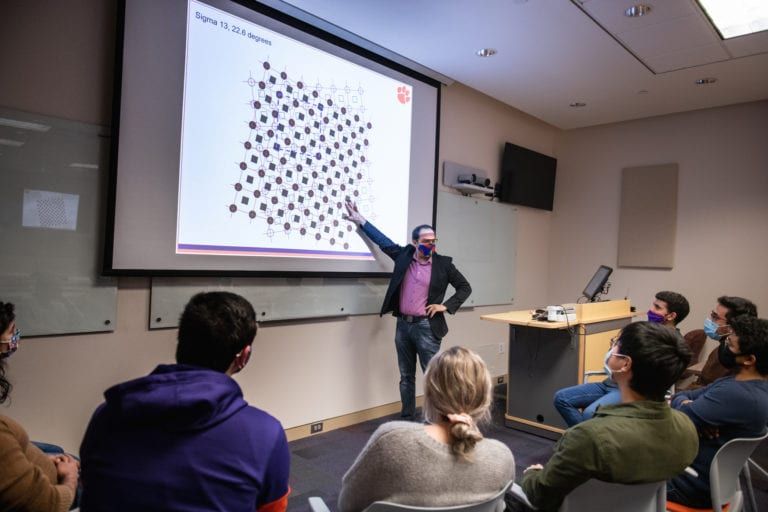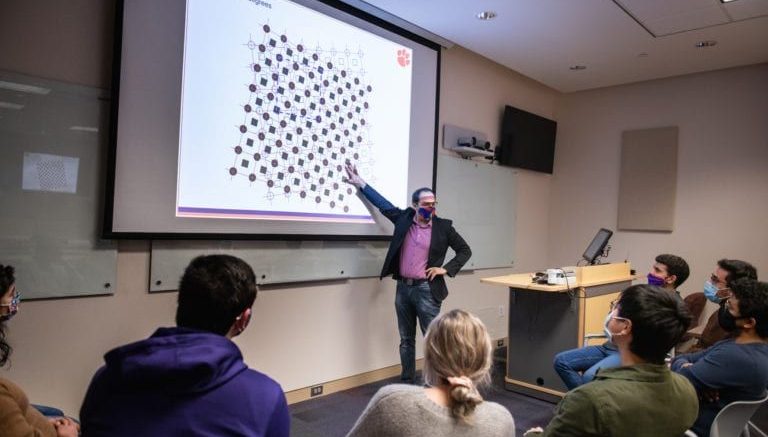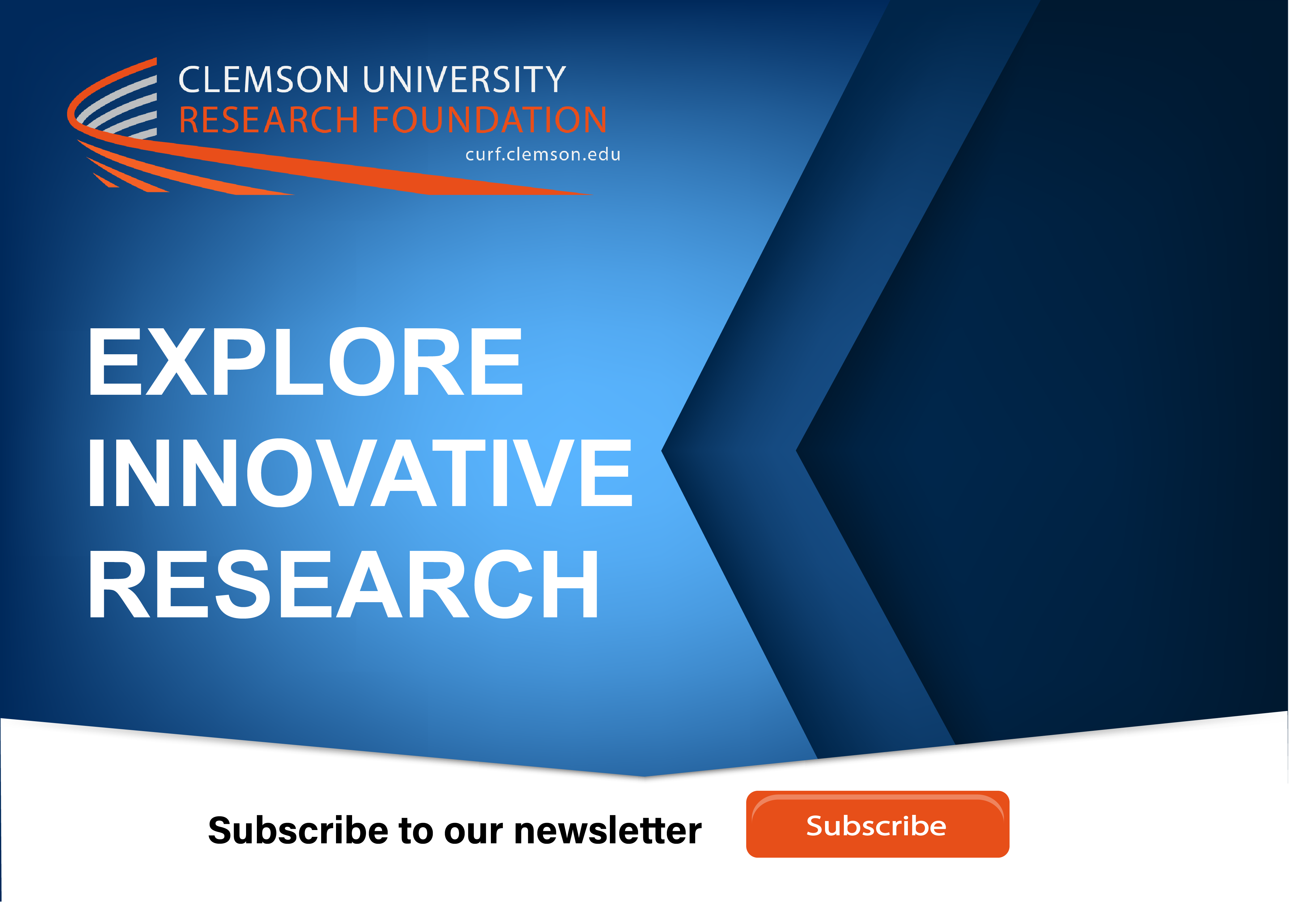
Clemson University Ph.D. student Yasir Mahmood has taken courses in mathematical physics and experimental microscopy.
He has developed computer simulations that help researchers theorize how nano-scale metal grains grow under high temperatures.
It was a year of hard work that is about to pay off. Mahmood plans to spend two summers in Albuquerque, New Mexico to test those theoretical models and computer simulations in real-world experiments at the Center for Integrated Nanotechnologies (CINT).
“All I have seen is those crystal grains on a computer screen—results from simulations we have created,” Mahmood said. “Now, at CINT, I’ll get the opportunity to look at those grains using transmission electron microscopes. That would be connecting the dots. I simulated this on screen, and now I’ll be seeing it in real life. I’m really excited about it.”
CINT is a Department of Energy nanoscience user facility jointly operated by Sandia and Los Alamos National Laboratories.

Fadi Abdeljawad
The opportunity was made possible by Mahmood’s advisor, Fadi Abdeljawad, an assistant professor of mechanical engineering at Clemson.
Abdeljawad has received $190,000 for nearly two years of research through a National Science Foundation program called EPSCoR Research Infrastructure Improvement Track 4: EPSCoR Research Fellows.
Abdeljawad said the grant allows him and a student to temporarily relocate to CINT at Sandia for up to six months. It will allow Mahmood to expand his skillset and position himself at the forefront of research in nanometallurgy, Abdeljawad said.
“This is cutting edge in terms of the science,” he said. “He’ll be working in close collaboration with scientists at a Department of Energy national laboratory. This will foster a lot of collaborations for us at Clemson, and it will also be great for his career opportunities.”
The overarching goal of the project is to better understand at near-atomic-scale resolution the fundamental physics of how nanometals behave under high temperatures, Abdeljawad said.
“If we have this understanding, we could then design nanometals that can behave with excellent properties for many engineering applications,” Abdeljawad said. “The common ones would be structural and functional applications.”
It could, for example, lead to materials used in batteries, fuel cells and electronics, or new aerospace components that can withstand high temperatures, he said.
Abdeljawad said that he plans to have one Ph.D. student working on the project, along with as many as four undergraduates per semester through the Creative Inquiry program.
Abdeljawad was a postdoctoral fellow and then a senior member of the technical staff at Sandia National Laboratories before joining Clemson in 2018
Abdeljawad and Mahmood are receiving a warm welcome from Brad Boyce and Khalid Hattar, both materials scientists at Sandia.
“We look forward to collaborating with Dr. Abdeljawad and his student, Yasir Mahmood, on their visit to the Center for Integrated Nanotechnologies,” Boyce and Hattar said in a joint statement. “This will provide new opportunities to expand knowledge in nanometallurgy using Sandia’s state-of-the-art microscopy capabilities and explore future collaborations between Sandia and Clemson.”
Mahmood said he learned about Clemson while pursuing his master’s degree in mechanical engineering at Malaviya National Institute of Technology Jaipur in northern India.
“Clemson has some really good professors in the field of computational sciences, and I wanted to work in this field,” he said. “I went through the faculty profiles and was really intrigued by the works they have done here. That’s how I short-listed Clemson.”
Abdeljawad said Clemson is a great place for his work because of its collaborative environment.
“The interdisciplinary nature of the research I do allows me to work with physics professors, material scientists and mechanical engineers,” he said. “That’s great for my students. A lot of them are taking courses across all departments. That’s pretty unique.”
Abdeljawad’s research requires intensive supercomputing resources, so his team makes use of the Palmetto Cluster supercomputer.
“Clemson houses the Palmetto high-performance supercomputer, and we definitely utilize it heavily,” he said. “I’d like to give a shout-out to the Palmetto staff, because they have been instrumental in the research that I do.”
Atul Kelkar, chair of the Department of Mechanical Engineering at Clemson, congratulated Abdeljawad on his award.
“Dr. Abdeljawad consistently shows excellence in both teaching and research,” Kelkar said. “His hard work, creative solutions and continuous pursuit of excellence is creating fantastic opportunities for his students and advances the field of nanometallurgy. His success is well deserved.”
The EPSCoR Research Fellows grant marks the second year in a row that Abdeljawad has received funding through programs aimed at promising faculty members early in their academic careers. Last academic year, he received an award through the Army Research Office Young Investigator Program.
Abdeljawad was also recognized at the start of the COVID-19 pandemic for making a quick, successful transition to online teaching in part by using a wall in his house as a giant white board where he wrote equations for his students to see.
Mahmood said that when he was in India, he taught students who were 13- and 14-years-old. He said he may return to teaching after receiving his Ph.D.
This time it would be at the collegiate level, just like his advisor.
–
Contact:
To arrange an interview, contact Paul Alongi at 864-350-7908 or palongi@clemson.edu.



Be the first to comment on "Clemson University; Fadi Abdeljawad and his students to pursue research at the forefront of nanometallurgy"